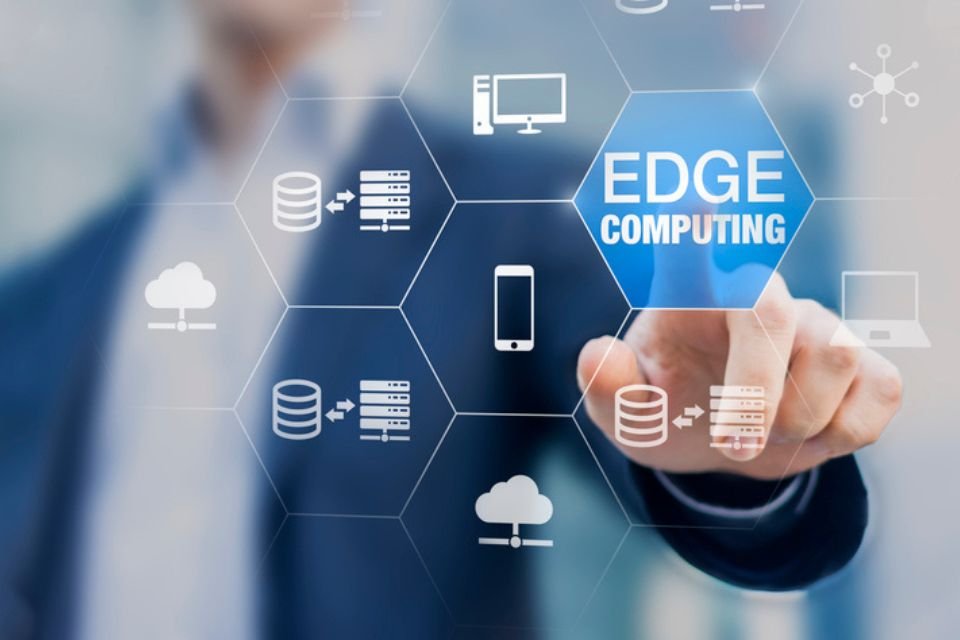Edge Computing or edge computing, cloud, internet, and telecommunications networks are intrinsically connected concepts and it is important to understand each in order to understand their evolution and impact.
Today, when the phrase “is in the cloud” is used, we get the impression of something spiritual, physical, and intangible. Big mistake. Behind these concepts is very real and majestic.
Using the internet for everything is common and trivial, but do you have any idea what the internet is and where it is physically located? In simple terms, a large set of geographically distributed and physically interconnected computers (via cables) form the first layer of the internet. This group of computers is called “Autonomous System” (AS) level 1.
Each AS at this level is also physically connected to other smaller ASs, forming the second layer of the Internet. Each second-level AS is connected to other smaller ASs, and so on until you create a broad hierarchy of connections between devices connected to and connected to them via an “Internet Service Provider” (end-level AS). world, the world we call the internet.
A cloud, on the other hand, is a space (storage or processing) allocated to one or more servers (large computers) located in this great connection hierarchy, which is the internet. Simply put, when we search for something in the cloud, we go through these connections between ASs until we reach the exact location where our content is stored.
What is the relationship between Edge Computing and telecommunications?
As I mentioned in my last article, with the development and exponential growth of the internet, cloud architecture started to take place in the daily lives of people and companies. Complete software solutions are now available via browser without the need to install anything locally on the computer.
Companies that started to invest in services such as AWS (Amazon) and Azure (Microsoft) achieved great growth by moving their solutions completely to the “cloud” without the need for large infrastructure investments.
Despite initial enthusiasm for the cloud, it was realized over time that such technology could not be applied to everything, and difficulties soon began to arise. Solutions with high volumes of data and fast response did not work well in the cloud.
Imagine you arrive in a completely unknown new city. Rent a car, program your destination into GPS and start driving by following the directions shown. With every distance you travel, your location (latitude and longitude) is updated on the map, and traffic conditions and all possible roads should be updated at the same speed.

Now the long way your GPS navigator has to travel in the AS hierarchy to get to where the Google Maps or Waze data is stored, and the time it takes for the same data to return to your navigator, every change of latitude and longitude to update the map on your screen.
After all, how are these actions possible with Edge Computing?
the secret is here Edge Computing This adds capacity and intelligence to devices close to us, adding computing power as close as possible to where data is generated. In the case of GPS, data is “downloaded” from the cloud when you request a destination.
Your GPS navigation device (example edge device), has enough intelligence to guide you along the route without needing to fetch data from the cloud (so the browser will still work even if you lose your internet connection mid-trip). It only requests traffic and event updates that do not require a very high responsiveness.
HE Edge Computing It has enabled the creation of new applications and the solving of problems that cannot be solved with the “cloud” approach. The implications of this approach on telecommunication networks are many, but we can mention a few main ones:
-
Latency Reduction: response time is much faster than the cloud approach, with data processing being closer to where they are produced, making the experience of using the network and services much better;
-
Competence: since most data is processed “locally”, the amount of data circulating in the hierarchy of ASs is much less, meaning that as companies grow, they do not need to increase their connectivity to keep their services up and running;
-
Security: local data processing makes it possible to isolate sensitive data without the need to roam the internet;
-
More scalability: like Edge Computing companies can more easily scale their operations to serve more end users. This is especially important in applications that require high performance and processing power with real-time data analysis and artificial intelligence.
Definitely to be adopted Edge Computing It can significantly improve efficiency, security and user experience in telecommunications networks. This technology offers a new approach to data processing that can help companies better adapt to market demands and end-user needs.
With its expansion, we will witness the launch of more and more innovative services and simplification of previously unimaginable processes!
—–
*Júlio Martins is Director of Innovation at Roost, a technology company specializing in edge computing solutions.
Source: Tec Mundo
I am a passionate and hardworking journalist with an eye for detail. I specialize in the field of news reporting, and have been writing for Gadget Onus, a renowned online news site, since 2019. As the author of their Hot News section, I’m proud to be at the forefront of today’s headlines and current affairs.










